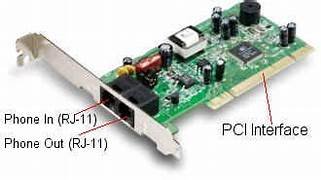A modem is a communications device that allows a computer to send and receive data through telephone or cable lines. Techopedia Explains Modem Card Most modern computers connect to a home network, a local area network or the Internet using an external modem or through an Ethernet port or a wireless device such as a USB dongle.
1. What Is a Modem Card?
A modem card is a hardware component that allows a computer to connect to the internet or other networks using telephone lines or cable systems. The word modem stands for Modulator-Demodulator. It changes digital data from the computer into analog signals for transmission and converts incoming analog signals back into digital data.

2. Function Of a Modem Card
- Converts Data Signals:
- Modulation: Converts digital data from your computer into analog signals to send over phone lines.
- Demodulation: Converts incoming analog signals back into digital data the computer can understand.
- Establishes Internet Connection:
- It dials the Internet Service Provider (ISP) and manages the connection.
- Controls Data Speed:
- It manages download and upload speeds based on bandwidth and ISP limits.
- Error Checking:
- Checks for errors in the data and requests retransmission if needed.
3. How a Modem Card Works
- When you open a browser and access a website, the modem takes your computer’s digital data.
- It modulates the signal—turning it into analog form that can travel over telephone or coaxial lines.
- This signal is sent to your ISP.
- The ISP processes the request and sends back data through the same line.
- The modem receives that analog signal and demodulates it back into digital form.
- Your computer receives the webpage or online content.
4. Types of Modem Cards
- Internal Modem (Card-Based)
- Installed inside the computer (PCI or PCIe slot).
- Common in older desktop PCs.
- External Modem
- A box that connects via USB or serial port.
- Easier to set up and replace.
- Cable Modem
- Used for broadband cable internet (e.g., from Virgin Media).
- Converts cable data into usable internet.
- DSL Modem
- Works with telephone lines but offers faster speeds than dial-up.
- Wireless Modem (Mobile Broadband)
- Uses 4G/5G cellular networks.
- Often seen as USB dongles or built into Wi-Fi routers.
5. Size of Modem Cards
- Internal Modems: About the size of a postcard (10–15 cm long).
- External Modems: Vary in size; can be as small as a flash drive (USB modem) or as large as a home router.
6.Cable Modem:
A standard DOCSIS cable modem used in homes.
7.External USB Modem:
Huawei USB modem used for 3G/4G mobile networks.
8. Summary
- Modem cards allow digital computers to communicate over analog lines.
- They modulate and demodulate signals to enable internet access.
- Types include internal, external, DSL, cable, and wireless modems.
- Though modern PCs use external or built-in modems, internal cards are still found in legacy systems.

